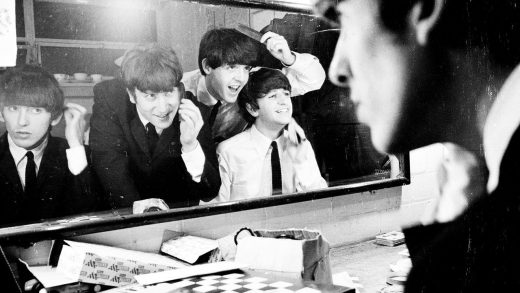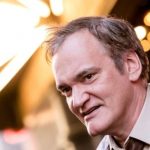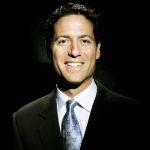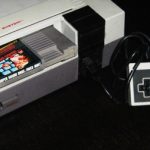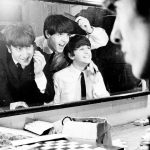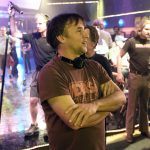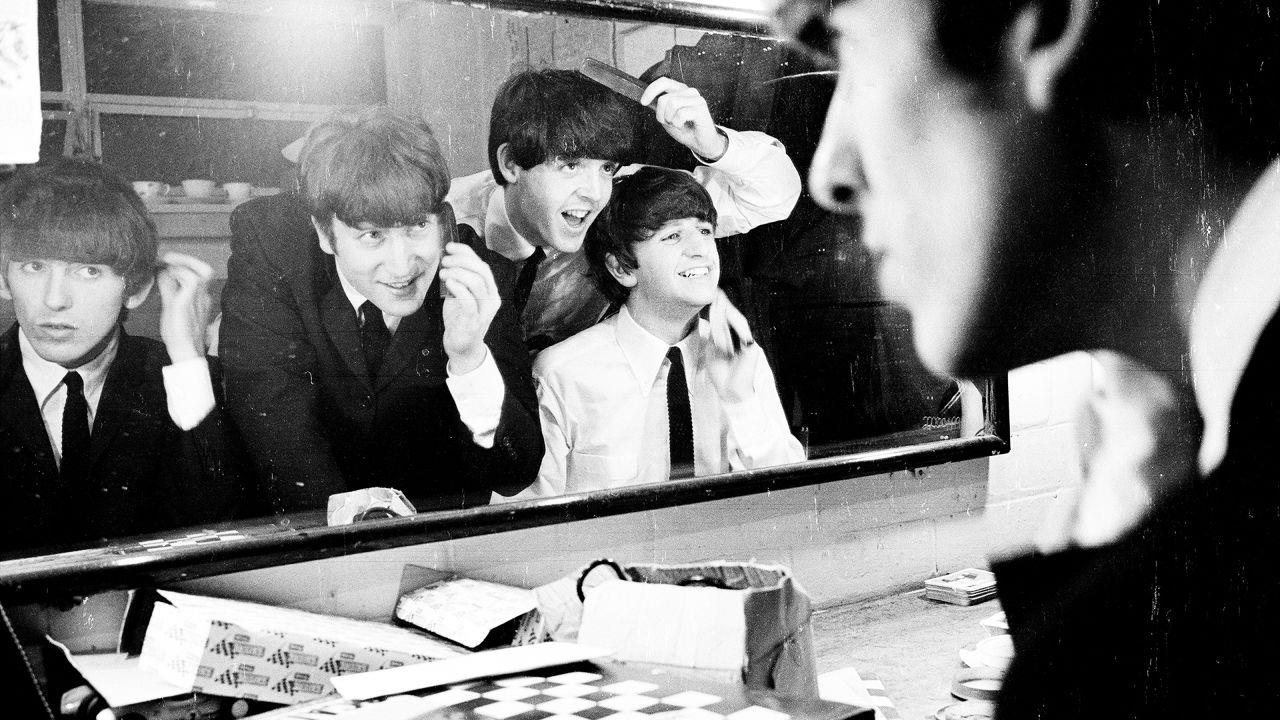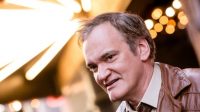Crowdsourcing The Beatles: How Ron Howard’s New Documentary Unearthed Rare New Footage
Listening to Ron Howard talk about his latest film, you get the sense he’s been wanting to make it since 1964, when he was 10 years old. He had watched The Beatles perform on The Ed Sullivan Show just weeks before his tenth birthday, when he opened a box containing the only gift he truly wanted: a Beatles wig. As Beatlemania proceeded to sweep America—and then the world—Howard reacted the same way millions of kids did—fanatically. He’s a lifelong fan, so you can hardly blame him for sounding giddy when he talks about directing The Beatles Eight Days A Week: The Touring Years, a documentary that lands in U.S. theaters on September 16 and on Hulu the next day.
“I immediately thought, this would be a great way to meet Paul McCartney and Ringo Starr,” Howard says. Interviewing the two surviving Beatles was a vital part of the process, but it was only one piece of the complex puzzle. “I thought, no, there’s a real responsibility involved here! I need to delve into the story and really understand it.”

Fortunately for the Oscar-winning director, by the time he signed on to direct the film in 2012, he had access to an enormous trove of raw material. That’s because a globe-spanning team of archival researchers had already spent more than a decade digging through obscure collections and tracking down long lost footage shot by fans. With the backing of The Beatles’ Apple Corps and the production help of Nigel Sinclair and White Horse Pictures, the mission to find—and then painstakingly restore—countless hours of video and audio from the concerts was ramped up.
“All this additional footage fleshes out the personal moments and concert moments,” says Howard. “I knew that that was a great building block. It was up to me to find the story in it.”
The finished product is a 100-minute examination of five chaotic and uniquely formative years in pop culture history. From the first time The Beatles played Liverpool’s tiny Cavern Club in 1961, through their last-ever concert at Candlestick Park stadium in San Francisco in 1966, we see them evolve from a musically proficient rock ’n’ roll band to full-blown pop stars immersed in a nonstop global whirlwind that tested the limits of concert halls, technology, police forces, and the foursome’s own physical selves. On the surface, the tale of Beatlemania sounds like a well-worn one, but this version zooms in and offers fans a more intimate, detailed look.
“I thought that their idea of focusing on the touring years was really ingenious,” Howard says. “As a movie director, I immediately identified it as sort of an adventure story. I felt like it was almost an ensemble survival story for these guys. They launched themselves into this, and the world reacted in a way that nobody could have predicted.”
By highlighting The Beatles’ origin as a live band, the filmmakers manage to pull at a few unique, often overlooked threads in the story of one of the most revered, thoroughly documented bands in history. In addition to the personal and artistic bonds that held them together through an unprecedented type of stardom, we also see how their popularity helped invent the stadium concert before such arenas were equipped with the appropriate sound systems. Then there are broader, more historical details: From the group’s famous dust-up with the Christian South (courtesy of John Lennon’s infamous “more popular than Jesus” comment) to their role in helping integrate a Florida stadium by refusing to play to a racially segregated audience.
Even the act of watching the early Beatles perform live is an unusual opportunity. Typically, clips of the foursome’s concerts are used to illustrate the chaos of Beatlemania, complete with a thick and persistent sonic layer of thousands of young women screaming their heads off. Even for people who paid good money to see the band play, the performance itself was almost an afterthought, secondary to the thrill of seeing the guys in person. In Eight Days a Week, thanks in large part to newly remastered audio, fans are finally able to observe—and hear—an impressively tight and often pitch-perfect live band.
“For people who know the music and think they know the story, there’s so much more there,” Howard says. Even, he promises, for diehard fans like him.
How The Idea For The Film Was Hatched
Matthew White was working at National Geographic in 2003 when he accidentally stumbled across a small treasure. Buried in the organization’s extensive media archives was a clip of The Beatles getting off of a plane in Anchorage, Alaska, in June 1966. The band’s flight to Tokyo had been redirected because of a typhoon. For a brief, unexpected moment, their world tour put them in a remote corner of the world where they did not play shows and could press pause on their frantic schedule. They happened to be in the vicinity of National Geographic filmmakers, who shot what White calls “beautiful” footage. It was an innocuous clip, except for one thing: Nobody had ever seen it.
“I realized that anywhere The Beatles were, if there were cameras, people shot video,” White says. Much of that footage sat in odd places—not just in the basements of media organizations like National Geographic, but also in police archives, 8mm film transfer houses, and in the attics of fans, many of whom were buying their first handheld home video cameras in the early 1960s. And as somebody who had worked in visual archives since the mid-1980s, White knew that this analog material was threatened by the passage of time and the natural deterioration of film, not to mention fires and natural disasters.
It got White thinking: All of this “funky, offbeat media” as he calls it—the amateur footage shot at concerts and other public appearances—might be copious enough to form the backbone of a documentary film. So he went to Apple Corps, whose London headquarters was conveniently down the block from his office, and pitched the idea to then-CEO and onetime Beatles tour manager Neil Aspinall. Apple was intrigued, but not yet ready to commit. The band’s story had just been told in documentary form in the mid-’90s via the eight-part Beatles Anthology series. But perhaps if there was enough never-before-seen material floating around in the world, Apple could be convinced.
“I didn’t go in and say, ‘I want to make a film about Beatlemania,’” White says. “I’m sure they’ve gotten that pitch thousands of times. I went and said, ‘Let’s see what we can find.’”
White continued digging, his hunt for long-lost footage turning into a passion project. Eventually, a formal business endeavor emerged with the launch of One Voice One World (OVOW), the LLC he founded with two partners in 2007. White and his team slowly built out a network of Beatles historians and collectors around the world. The project introduced them to people like Erik Taros, a fan who missed an opportunity to see The Beatles live as a kid and who has spent several decades collecting live footage of the band.
“A lot of the best material in archives is never used by filmmakers because they come to the archives with a story and the footage doesn’t fit the story,” White explains. “So we flipped the model. We started this enormous research project globally. The Beatles were a big enough phenomenon that it would support that.”
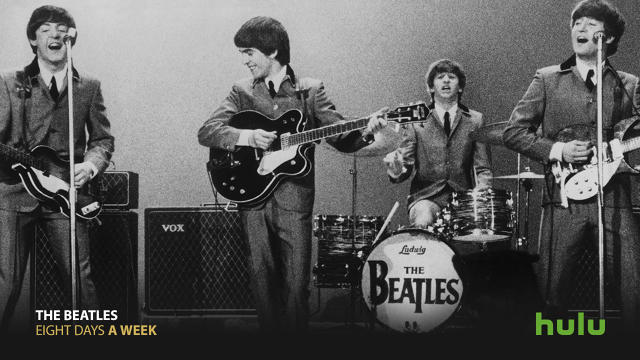
Making It Official
By 2012, Apple Corps was ready get on board. They commissioned OVOW to do additional research, widening the group’s efforts with new resources and sometimes guiding their hunt. From a research space at the University of Maryland, White and his team helped oversee an army of more than 30 researchers around the world, using the institution’s facilities and technologies to keep track of a growing mountain of material.
Around this time, Apple also enlisted the help of White Horse Pictures, the Hollywood film production firm founded by Nigel Sinclair (who produced Living in the Material World, Martin Scorcese’s 2011 Emmy-winning documentary about George Harrison). Leaning on OVOW and Apple for archival material, White Horse set out to help Howard develop the narrative by tracking down and interviewing witnesses who lived through the era, from concert attendees and roadies to, of course, the surviving Beatles themselves.
“We interviewed Paul and Ringo twice,” says Sinclair. “Each of their interviews were very forthcoming and extraordinarily fresh, considering that this is a story that they’ve had to tell many times.” They also spoke to Yoko Ono and Olivia Harrison (the widows of John Lennon and George Harrison, respectively) and, although they don’t appear on camera, both provided what Howard calls “a tremendous amount of knowledge” about the early period.
In Eight Days A Week, fans acquainted with the band’s history will see familiar scenes: police desperately trying to contain crowds of tens of thousands of teenagers, teenage girls seeming to have a collective mental breakdown at Shea Stadium in 1966, as they did in 90 different cities as the band traveled the globe. In interviewing Starr and McCartney, Howard and his producers sought to get a better understanding of what this unusual period was like for the band members on a personal level.
“Now we live in a celebrity culture,” says Sinclair. “There was no celebrity culture in 1963. Nobody would even know what the word meant. What was it like managing that experience?”
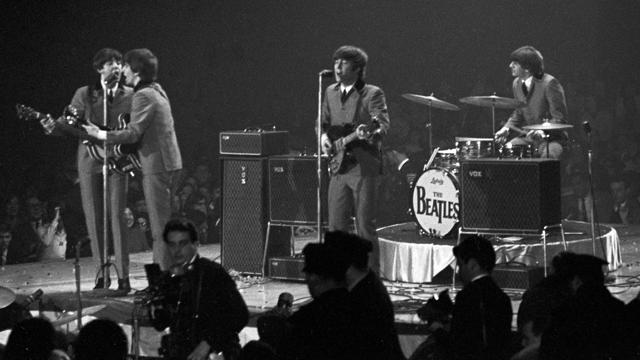
The film depicts a protective and brotherly bond between what are ultimately four young friends caught in the eye of an unparalleled cultural storm—a phenomenon that McCartney and Starr attest could be frightening at times. Indeed, the physical demands and risks of touring the world famously led the band to stop playing live all together, a process that unfolds in the film with a new level of personal detail and intensity.
“It was great to get Paul and Ringo at this point in their lives,” says Howard. “They’ve been so active and productive. And yet I think maybe they’re reaching a point where they have a perspective of wisdom and another level of appreciation of what that experience was, which I think our film benefits from.”
As important as the band members’ own voices are in telling the story (modern-day McCartney and Starr are aided by retrospective details from audio interviews with Lennon and Harrison recorded before their deaths), they obviously weren’t the only ones there. The film’s producers went to great lengths to track down other witnesses, like fans who attended Beatles concerts, members of their road crew, and people like Larry Kane, a journalist who traveled with the band in 1964 and has written extensively about them.
One of these other voices is that of Kitty Oliver, a historian who saw The Beatles perform at the Gator Bowl in Jacksonville, Florida, in 1964 under what turned out to be historic circumstances. At the time, concert venues throughout the Southern United States were, like so many public spaces, segregated by race. As a young African- American, Oliver faced the prospect of watching her favorite band while seated separately from from her white peers. But the band, for whom racial segregation was a foreign—and as McCartney puts it in the film, “stupid”—concept, refused to play the show unless the audience was integrated. Rather than face the inevitable wrath of tens of thousands of outraged teenagers, the Gator Bowl held its first integrated concert. This became Oliver’s first experience of interacting with white people in public. The Civil Rights Act of 1964 had just been signed into law, so the band might not have had to contend with future incidents like this. But just in case, they added an anti-segregation clause to the contract they used to book live shows in the U.S.
“There are so many aspects of the Beatles story that have this coming together of multiple aspects of culture and society and art at the same time,” says Nick Ferrall, one of the film’s producers. “Somebody like Kitty Oliver is such an incredible witness to that.”
The Gator Bowl is one detail in the film that will be new to casual fans, just as it surprised Howard. Yet to the band, it didn’t seem like a big deal at the time. “They just took that segregation stand as an obvious choice,” he says. “To this day, they don’t really recognize what a courageous stance it was.”
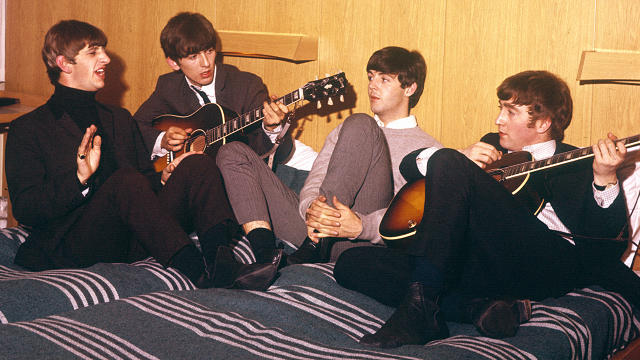
Why Technology Made It Worth The 50-Year Wait
While it would have been possible to make a documentary on this topic 20 or 30 years ago, the end result would not have been quite as thorough as Eight Days A Week. That’s because the film’s research and production benefited from modern technology in a variety of ways. It’s not just that things have evolved since 1966. This film would have been difficult to make even a decade ago.
“Things really changed in the world that we all live in between 2002 and 2014, in terms of social media access to fans, ready dissemination of things that interest people,” says Sinclair. “We were able to take the whole archival collection to another level.”
OVOW and the film’s research team had already begun using social media to track down potential sources. Software that monitors Twitter and other social platforms for chatter about various topics—in this case, specific Beatles concerts—helped them find people who might have stories or footage to share. And now, with Apple Corps’ backing, the project was able to cast an even wider net. The filmmakers put out a public call—including to tens of millions of Beatles fans on Facebook—for footage, artifacts, and stories from the group’s public appearances.
“We just got completely flooded,” says Sinclair. Several hundred people reached out with footage and anecdotes; a few of them offered up what Sinclair calls “treasures”—the sort of unique, higher-quality material that might find its way into the film.
One scene that benefited from the crowdsourcing effort was the 1966 concert at Candlestick Park in San Francisco, their final live show. Other than a low-quality audio recording, very little documentation of that performance exists. But when word spread that The Beatles were looking for vintage footage, a woman came forward who had shot super 8 footage of that day and had been storing it under her bed for decades.
“We were the first people to see it,” says Ferrall. “It was a pretty haunting experience to watch that come up for the first time. It was something that you realize that no one had ever seen—and it’s The Beatles.”
The decision to halt touring would come later, so nobody realized at the time that Candlestick Park would be the band’s last concert. “That turns out to be one of our most important scenes. And that footage really means a lot,” Howard says.

Separating Signal From The Noise (of 50,000 Screaming Girls)
Another way that recent advances in technology made a 50-year-old story easier to tell was by allowing editors to restore the visual and audio quality of the decades-old, often lo-fi footage. This is a challenge with any historical documentary, but it’s especially important for a movie about music—and even more so for a band as particular about its legacy as The Beatles.
That’s why Apple Corps keeps Giles Martin around. The son of the late Sir George Martin—the “fifth Beatle” who produced every original album and helped shape the band’s sound—has led the charge in remixing and remastering their music for various projects over the last decade. This has included Cirque de Soleil’s Love show, The Beatles Rock Band video game, and reissues of the their albums, such as the 2009 remastered catalog and the more recent greatest hits collection, entitled 1, which included a DVD of music videos remixed in 5.1 surround sound.

By now, Martin knows his way around every layer and sonic nuance of just about every song The Beatles ever recorded and released. But even that level of expertise couldn’t fully prepare him for the work that went into fine-tuning the sound for Eight Days A Week.
“Imagine going to a concert today, recording something on your phone, and then intending to play it in a movie theater,” Martin says. “That would be better than what I was given.”
The Beatles played stadiums in the mid-’60s not because they were ideal-sounding venues, but because they were the only manmade structures that could reasonably fit the hordes of frantic teenagers clamoring to see them in person (and who would otherwise congregate outside of smaller venues in crowds not easily contained by police). In most cases, the band’s set was projected to the crowd using the same public address system used to narrate the plays in a baseball game. Not that concertgoers seemed to mind the awful acoustics: They were too busy screaming and crying, adding yet another strata of noise to the air. As a result, any recordings made of the shows were typically one track (as opposed to several, separated by instrument, as recording studios are accustomed to) and fairly low quality.
To combat the noise, Martin and his team used de-noising software to dial back the screams so they could hone in on the actual music, which allowed them to equalize and balance the audio (such as boosting the bass), tweak the details (like adding extra crack to the snare drum), and improve the overall fidelity of the recordings any way they could without blasphemously introducing foreign artifacts like samples. “What you’re hearing is the band playing,” says Martin.
Once finished, they layered the screaming back on top, reducing its volume whenever they could do so without affecting the song itself.
“It’s like having a cake and then going back and deciding how many eggs you want to put in it and then putting it back together again,” Martin says. “We try and push the technology as much as possible.”
The quality of the recordings varied from show to show. The band’s concerts at The Hollywood Bowl, for instance, were unusually well recorded and easier to work with (a remastered collection of songs from these shows is being released on CD later this month). But many others, like a clip of the song “Roll Over Beethoven” played at a concert in Stockholm, were much less forgiving.
“The challenge in this is you have to make sure that you do justice to the band,” says Martin. “The Beatles worked at a time when there weren’t any tricks.”
By contrast, Martin has an arsenal of new tools at his disposal today. “I’m big into technology and I try to continue the legacy of my dad and the Beatles by trying to push new boundaries in what we’re trying to do,” he says. “A lot of work had to go into this.”
Fast Company , Read Full Story
(50)

